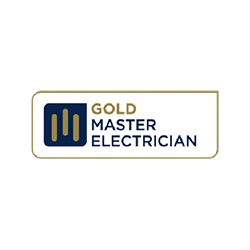21 November 2016
Changes to requirements for selling electrical equipment
On 1 March 2013, the Queensland Government implemented a new Electrical Equipment Safety System (EESS) which outlines changes to the requirements to sell electrical equipment (new and second hand).
The new EESS will now enable the public to search a national database of responsible sellers and electrical equipment registrations. The system has been introduced to increase consumer safety for household electrical equipment. Electrical equipment can be simply tracked through the database to the supplier and it’s legal supply in Australia and New Zealand verified. This system will be implemented through Australian states, excluding New South Wales, during 2013. New Zealand is carrying out similar legislation.
The EESS requires all in-scope electrical equipment sold in Queensland to be linked to a registered responsible supplier before sale. In-scope Level 2 or 3 classified equipment must also be registered on the national database.
What is In-Scope Electrical Equipment?
In-scope electrical equipment is low voltage electrical equipment that is:
- rated at greater than 50V AC RMS or 120V ripple-free DC (Extra-Low voltage)
- rated at less than 1000V AC RMS or 1500V ripple-free DC (High voltage)
- designed, or marketed as suitable for household, personal or similar use.
In-scope electrical equipment is broken into 3 categories-
- Level Three – Equipment requires a Certificate of Conformity issued by Government Regulators or recognised external certification scheme. This certificate shows that the equipment has been tested and meets relevant safety standards.
- Level Two – Equipment requires a compliance folder available on request which details evidence of electrical safety standards have been met. This level requires equipment to be linked on the database to a registered responsible supplier.
- Level One – Equipment requires the responsible supplier to be registered and have evidence that the equipment is electrically safe.
Classifications
Most of the appliances and electrical sockets in your home will be classified as In-scope Electrical Equipment – Level Three. Some examples of Level Three are:
- Plug, power supply or charger, adapters, cord extension sockets, wall switch, socket outlets
- Portable cooking appliances – ovens, grills, bread makers, hot plates, sandwich toasters, toasters, etc
- Dishwashing machines, fans (portable and fixed), lamps, rangehood, room heaters, TV, washing machine, vacuum, iron, etc
- Water heaters, pool/spa equipment, electric mower and trimmer/clippers
- Hair care appliances – clippers, hair dryers, curling wands, etc
Second hand electrical equipment
Sellers of second-hand in-scope electrical equipment must comply with certain requirements pertaining to electrical safety and equipment operating instructions.
Copies of manufacturer’s usage instructions must be sourced wherever possible for the sale of second-hand equipment. If unavailable sellers must provide electrical safety advice for the equipment such as:
- safe operating instructions
- care and maintenance instructions required to maintain electrical safety
- any specific safety instructions relevant to the equipment.
Testing requirements
Electrical equipment testing is not required prior to selling second hand, but the buyer must be informed that the equipment has not been tested. Sellers of second-hand equipment may choose to arrange testing by a licensed electrician qualified to test and provide the buyer with the testing information. When selling to a business which repairs or reconditions electrical equipment the second-hand seller does not need to test or notify of non-testing.
Suggested articles
No articles found
